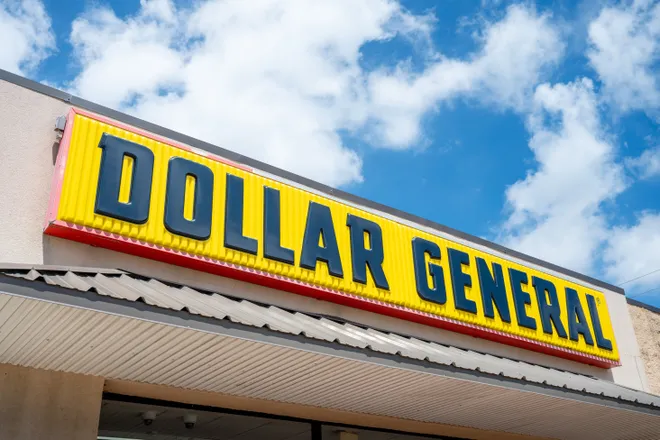Consumer spending data looks solid, but some shoppers continue to struggle
Michael Robert Langdon gets most of his shopping done at bargain chains like Dollar Tree. But even with the store's base price of $1.25, his money only goes so far.
A year ago, Langdon would spend $150 each month on food and toiletries at local dollar stores. Today, his monthly spend is closer to $80. Inflation has taken a toll on his budget, he said. And while he is in low-cost housing, his one-bedroom apartment in Arcata, California, eats up a third of the roughly $1,000 he brings in each month through Social Security Disability Insurance and survivor benefits.
People in poverty “have to really stretch around here," Langdon, 70, told USA TODAY. "Everything is so expensive, and housing is extremely tight.”
Langdon’s story goes against broader economic trends, which show signs of solid U.S. consumer spending despite high interest rates and inflation. But not all shoppers are feeling relief at checkout. As the labor market slows and renters continue to feel pinched from higher housing costs, economists say there are portions of the U.S. population who continue to struggle.
There are "pockets of weakness in an otherwise pretty solid consumer story" boosted by middle- and upper-class spending, said Oxford Economics Deputy Chief U.S. Economist Michael Pearce. "We're seeing a bit of differentiation in terms of (consumer) performance by income, but also by wealth."
Protect your assets: Best high-yield savings accounts of 2023
Dollar General says customers are 'financially constrained'
The divide between consumers is playing out in various companies’ quarterly earnings.
Dollar General last week lowered its full-year sales forecast after reporting same-store sales grew 0.5% year-over-year in the latest quarter, below expectations.
While discount stores tend to attract more business during times of economic strain, they have faced increasing competition as big box stores like Walmart and Target cut prices, according to Neil Saunders, managing director of analytics company GlobalData.

Dollar General also pointed to “financially constrained” core shoppers tightening their budgets. CEO Todd Vasos said 60% of the company’s core customers – predominantly made up of households earning less than $35,000 annually – are pulling back on buying basic necessities due to higher prices and pressure from rising housing, utility and healthcare costs.
“Our customers are less able to stretch their budgets through the end of the month,” Vasos said during last week’s earnings call. He later added, “While middle- and higher-income households are seeking value as well, they don't claim to feel the same level of pressure as low-income households.”
The bargain store's earnings are among a “mixed bag” of retail performance in the latest quarter, according to Saunders.
Other retailers popular with low-income spenders – including Dollar Tree, Five Below and Big Lots – have seen shares tumble this year.
Five Below last week reported a 5.7% dip in same-store sales, with interim President and CEO Kenneth Bull noting that its lower-income demographic continues to underperform.
Dollar Tree ‒ which operates both the Family Dollar and Dollar Tree brands ‒ saw shares slide Wednesday after the company cut its full-year outlook. It cited greater financial pressures on middle- and higher-income customers, and Chief Operating Officer Michael Creedon said demand from Family Dollar's core, lower-income customers "remains weak."
"(The Family Dollar) customer right now is under some of the more significant budget pressures," said Chief Financial Officer Jeffrey Davis. "We're seeing that customer use all tenders. Not only maybe government assistance, but also using credit where it makes sense."
Meanwhile, retailers focused on more affluent households have seen stronger results. Best Buy shares so far this year are outpacing the S&P 500’s growth, and Target reported a nearly 3% jump in revenue in its latest quarter.
“How people feel and react depends upon personal circumstances,” Saunders told USA TODAY. “Some people are doing all right, some people are really struggling. So it's very polarized, and we see that in the retail results.”
An inequitable economic recovery
A period of “really solid income growth” has helped the American consumer, according to LPL Financial Chief Economist Jeffrey Roach. U.S. consumer confidence hit a six-month high in August, and consumer spending saw a solid 0.5% increase in July despite signs of reduced discretionary spending.
But there are signs of weakness.

Credit card balances are up 5.8% from a year ago, with Americans owing a record $1.14 trillion and seeing higher delinquency rates, according to an August report from the Federal Reserve Bank of New York. And Census Bureau data shows more households are reporting they either sometimes or often didn't have enough to eat within the last seven days: 11.4% of the population as of July, compared to 10.4% in January.
“The average consumer in the United States is in pretty good shape,” said Bill Adams, chief economist at Comerica Bank. “But there are pockets of different demographics in our country where people are still struggling with inflation, or where they haven’t benefitted by the increases in wages.”
One of the driving factors behind this gap, according to economists? Homeownership.
Homeowners – especially those who locked in a low mortgage rate before the Federal Reserve's interest rate hikes – have seen relatively stable housing costs and a boost in household wealth. U.S. home prices have jumped roughly 50% over the last five years, per real estate firm Zillow.
Meanwhile, Zillow data shows rents are up about 35% in that same time span, squeezing renters' budgets.
“Consumers that bought homes five or 10 years ago and have stable housing costs are experiencing inflation much differently than people who are renting or are trying to put together a down payment on a home today,” Adams said.
Pearce of Oxford Economics said investments in the stock market have also contributed to record levels of household wealth. The S&P 500 is up more than 15% so far this year.
But lower-income households tend to miss out on these gains. Just a quarter of the lowest-earning U.S. households earning less than $40,000 annually owned stock, according to an April survey from Gallup. And less than half of lower-income households earning less than $30,961 last year owned a home, compared with 81% of the top-earning households, according to the Federal Reserve Bank of Minneapolis.
Meanwhile, Pearce said the cooling labor market is putting more pressure on lower-income consumers, who tend to be more dependent on the strength of the labor market.
“The slowdown will be most pronounced in sectors where average incomes are lower," he said, pointing to industries like retail and hospitality. "These folks have been exposed a lot more to slowing income. And so I do think there is a lot of pressure on lower-income (households).”
But there may be better days ahead. If the labor market holds up and inflation continues to fade, "that should help support spending, even from lower-income consumers, over the next few years," Pearce said.
Disclaimer: The copyright of this article belongs to the original author. Reposting this article is solely for the purpose of information dissemination and does not constitute any investment advice. If there is any infringement, please contact us immediately. We will make corrections or deletions as necessary. Thank you.







